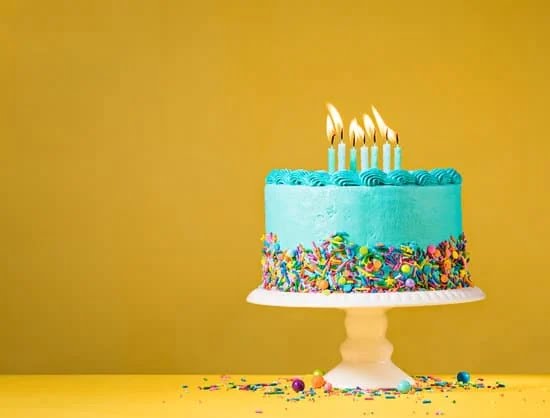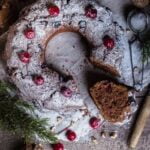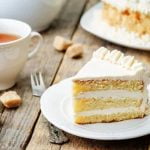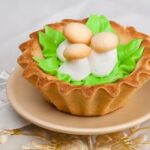Are you looking to add a sweet and colorful touch to your cakes? Look no further than candy cake decorations. From simple designs to elaborate creations, candy offers an endless array of possibilities for decorating cakes. The use of candy as a decorative element has become increasingly popular in the world of baking, and its versatility makes it a go-to choice for bakers and decorators alike.
Whether you’re planning a birthday celebration, a wedding, or simply want to add some flair to your baked creations, candy cake decorations can provide an eye-catching and delicious finish. In this blog post, we will explore the wide range of options available when it comes to using candy for decorating cakes. Get ready to be inspired by the amazing possibilities that await as we delve into the sweet and colorful world of candy cake decorations.
From choosing the right types of candy to mastering the tools and techniques for incorporating them into your designs, we will cover everything you need to know about creating stunning candy cake decorations. Whether you’re a beginner looking for simple ideas or an experienced baker searching for innovative inspiration, this blog post will provide helpful tips, creative ideas, and DIY projects so you can take your cake decorating skills to the next level.
So grab your favorite candies and get ready to embark on a delicious journey into the world of candy cake decorations.
Types of Candy for Cake Decorations
When it comes to using candy for cake decorations, the options are virtually endless. From gummy bears to chocolate shavings, there are countless types of candy that can add a pop of color and flavor to any cake design. Here are some popular types of candy that can be used for decorating cakes:
1. Gummy Candies: Gummy candies come in a variety of shapes, colors, and flavors, making them perfect for adding a fun and whimsical touch to cakes. From gummy worms to gummy rings, these candies can be arranged in creative patterns or used as borders for cakes.
2. Chocolate Decorations: Chocolate is a versatile option for cake decorations, whether it’s in the form of chocolate curls, chocolate bars, or even chocolate-covered pretzels. These decadent treats can add both texture and richness to cake designs.
3. Sprinkles and Nonpareils: These tiny confections are perfect for adding a burst of color and texture to cakes. Whether it’s rainbow sprinkles or metallic nonpareils, these small but impactful decorations can instantly elevate the look of a cake.
When choosing the right candy for cake decorations, it’s important to consider the overall design and theme of the cake. The size, shape, and flavor of the candy should complement the aesthetic of the cake while also contributing to its taste profile. Experimenting with different types of candy can open up a world of creative possibilities for stunning cake designs.
In order to achieve visually appealing and structurally sound candy decorations on cakes, it’s important to consider factors like stability and shelf life when selecting which types of candy to use. By understanding the different properties and characteristics of each type of candy, decorators can ensure that their creations not only look beautiful but also maintain their integrity over time.
With a little creativity and insight into the world of candy cake decorations, decorators can transform any ordinary cake into an extraordinary work of art that is sure to delight anyone who sees or tastes it.
Tools and Techniques for Decorating With Candy
Piping and Molding Techniques
When it comes to decorating with candy, there are various techniques that can be used to achieve stunning designs on cakes. Piping is a popular method for creating intricate patterns and shapes with melted chocolate or frosting, adding texture and dimension to cake decorations. Molding is another technique that involves shaping and sculpting candy into desired forms, such as flowers, letters, or figures, using molds and tools specifically designed for this purpose.
Creating Edible Art
Decorating with candy allows for endless possibilities of creating edible art on cakes. With the right tools and techniques, bakers can use candy to bring their creative visions to life. Whether it’s adding realistic-looking flowers made from gum paste or crafting whimsical shapes with molded candies, the only limit is one’s imagination.
Step-by-Step Instructions and Visual Examples
For those new to using candy as cake decorations, step-by-step instructions and visual examples can be incredibly helpful in learning the tools and techniques involved. From beginner-friendly methods like simple chocolate drizzles to more advanced skills like intricate piping designs, providing detailed guidance will empower readers to experiment with their own candy cake decorations. Including visual examples will also inspire creativity and showcase the stunning results that can be achieved with these techniques.
Creative Candy Cake Decoration Ideas
Candy cake decorations offer a world of creative and colorful possibilities for embellishing cakes of all shapes and sizes. From whimsical birthday cakes to elegant wedding confections, the use of candy as a decorative element can add charm, personality, and a delightful sweetness to any dessert. In this section, we will explore a variety of creative candy cake decoration ideas to inspire you to take your cake decorating skills to the next level.
Let’s begin by taking a look at some creative ways you can use candy to adorn your cakes:
- Candy Mosaics: Create beautiful patterns or images on your cakes using small, colorful candies such as M&M’s or Skittles. Arrange them in intricate designs or simply sprinkle them across the surface for a playful, mosaic effect.
- Chocolate Shards and Curls: Use chocolate bars or blocks to create delicate chocolate shards or curls that can be arranged on top of your cake for an elegant and professional finish.
- Candy Flowers and Shapes: Use gummy candies or fruit chews to mold flowers, hearts, stars, or other fun shapes that can be placed around the edges of your cake to add a whimsical touch.
In addition to these ideas, there are countless other creative ways to incorporate candy into your cake designs. Whether you’re aiming for a sophisticated look or a fun and playful vibe, the options are limitless when it comes to using candy as cake decorations. So unleash your creativity and let the vibrant world of candy inspire your next baking masterpiece.
DIY Candy Cake Decoration Projects
Are you ready to take your cake decorating skills to the next level? DIY candy cake decoration projects are a fun and creative way to add a pop of color and sweetness to your baked creations. Whether you’re a beginner or a seasoned baker, there are endless possibilities when it comes to incorporating candy into your cake designs.
Easy Candy Cake Decoration Projects
For those just starting out, simple candy cake decorations can make a big impact. Try using colorful M&M’s to create a vibrant border around the edge of your cake, or sprinkle crushed candy canes over a layer of frosting for a festive touch. Another easy project is creating lollipops out of hard candies by arranging them in a circular pattern on top of the cake.
Advanced Candy Cake Decoration Projects
If you’re looking for a challenge, advanced candy cake decoration projects can truly wow your friends and family. Consider creating intricate designs using gummy candies by cutting them into different shapes and arranging them in patterns on the cake. You could also try making edible “stained glass” windows using melted Jolly Ranchers to create colorful, translucent panels that can be placed on top of the cake as a stunning focal point.
Tips for Successful Candy Cake Decoration Projects
No matter what level of expertise you have, there are some key tips for successful DIY candy cake decoration projects. Make sure to use candies that complement the flavor of the cake, and consider the stability and weight of the candies when placing them on the cake.
It’s also important to have patience and precision when working with smaller candies or intricate designs, as attention to detail can make all the difference in creating visually stunning candy cake decorations that will impress any audience.
Tips for Incorporating Candy Into Cake Designs
The use of candy as a decorative element for cakes has become incredibly popular in the world of baking and confectionery. The versatility and colorful nature of candy make it an ideal choice for creating visually stunning cake decorations. When incorporating candy into cake designs, there are several important tips and techniques to keep in mind to ensure a successful outcome.
One essential consideration when using candy for cake decorations is balance and color coordination. It’s crucial to choose candy that complements the overall color scheme and theme of the cake. Whether you’re aiming for a whimsical, vibrant design or a more elegant, sophisticated look, selecting the right colors and types of candy will greatly enhance the visual appeal of the finished cake.
In addition to color coordination, it’s important to pay attention to the structural integrity of the candy decorations. Certain types of candy may be heavier or more delicate than others, so it’s essential to consider how they will be supported on the cake. Using appropriate tools such as piping bags, molds, and edible glue can help create sturdy and visually appealing candy decorations that won’t compromise the structural integrity of the cake.
Another essential tip for incorporating candy into cake designs is to consider taste considerations. While certain types of candy may look beautiful as decorations, it’s important to ensure that they complement the flavor profile of the cake. For example, if you’re decorating a chocolate cake, choosing chocolate-based candies or other complementary flavors can enhance the overall tasting experience for those enjoying the cake.
These tips for incorporating candy into cake designs are just some of the factors to consider when exploring this creative decoration option. By carefully selecting and arranging different types of candy, paying attention to color coordination and structure, and considering taste considerations, bakers can create visually stunning and delicious works of art that will impress any audience.
| Tips | Details |
|---|---|
| Balance and Color Coordination | Choose candy that complements the overall color scheme; select colors and types that enhance visual appeal. |
| Structural Integrity | Consider weight and delicacy of candies; use appropriate tools like piping bags, molds, or edible glue for support. |
| Taste Considerations | Ensure selected candies complement flavor profile; choose flavors that enhance overall tasting experience. |
Pros and Cons of Using Candy for Cake Decorations
Candy cake decorations add a fun and whimsical element to any baked creation, making it stand out and become a true showstopper. From colorful sprinkles to intricate chocolate designs, the possibilities are endless when it comes to using candy as a decorative element for cakes. However, like any other decorating technique, there are both advantages and potential challenges to consider when using candy for cake decorations.
One of the main advantages of using candy for cake decorations is the wide variety of colors, shapes, and flavors available. This allows for endless creativity and customization when it comes to designing a cake.
Whether you’re aiming for a bold and bright design or a more elegant and sophisticated look, there’s sure to be a type of candy that fits the bill. Additionally, candy is readily available at most grocery stores, making it convenient to source for your decorating needs.
On the other hand, one potential challenge of using candy for cake decorations is its shelf life. Some types of candy may not hold up well over time, leading to potential issues with the longevity of the design. Additionally, certain candies may not have the stability needed to support more complex or intricate designs, posing a risk of collapsing or melting on the cake. It’s important to consider these factors when planning and executing designs with candy cake decorations.
In summary, while there are several benefits to using candy for cake decorations such as versatility and availability, there are also considerations such as shelf life and stability that need to be taken into account. As long as these factors are balanced carefully, incorporating candy into cake designs can result in stunning and visually appealing creations that will delight any audience.
| Advantages | Potential Challenges |
|---|---|
| Wide variety of colors, shapes, and flavors available | Shelf life of certain candies |
| Convenient availability at most grocery stores | Stability needed for more complex designs |
Showcase of Stunning Candy Cake Designs
In conclusion, the world of candy cake decorations is as sweet and colorful as the treats themselves. With so many types of candy to choose from and a variety of tools and techniques available, the possibilities for creating stunning cake designs are endless. From simple DIY projects to elaborate themed creations, the use of candy as a decorative element opens up a whole new realm of creative possibilities for bakers and cake decorators.
Whether it’s using gummy bears, chocolate shavings, or even rock candy, the use of candy as cake decorations can add a touch of whimsy and fun to any dessert. The key is to carefully consider the type of candy being used, ensuring that it not only looks good but also complements the flavors of the cake itself.
By following some simple tips for balance, color coordination, and design principles, incorporating candy into cake designs can result in visually appealing and structurally sound creations that will impress any audience.
As seen in the showcase of stunning candy cake designs, there are endless opportunities to get creative with candy decorations. From vibrant and playful birthday cakes to elegant and sophisticated wedding cakes, the versatility of candy allows for a wide range of styles and themes to be explored.
By experimenting with different types of candy and techniques, bakers can truly push the boundaries of traditional cake decorating and create one-of-a-kind designs that will leave a lasting impression on anyone who sees (or tastes) them. So why not indulge your sweet tooth and let your imagination run wild with candy cake decorations?
Frequently Asked Questions
How to Make Candy Cake Decorations?
Making candy cake decorations is a fun and creative way to add a unique touch to your desserts. You can use various types of candy, such as gummy bears, lollipops, chocolate bars, or even rock candy.
To make the decorations, you can either use them whole or chop them up into smaller pieces, depending on the design you want to create. You can attach the candies to the cake using frosting, melted chocolate, or edible glue.
How Do You Attach Sweets to a Cake?
Attaching sweets to a cake can be done in several ways. One method is to simply press the sweets into the frosting on the sides or top of the cake.
Another option is to use frosting or melted chocolate as “glue” to adhere the sweets to the cake surface. For larger or heavier candies, you may need to insert toothpicks into the sweets before attaching them to provide extra support.
What Can I Use to Decorate a Cake?
When it comes to decorating a cake, there are numerous options beyond just frosting and icing. You can use fresh fruits like berries, kiwi slices, or citrus zest for a natural and colorful touch. Edible flowers, sprinkles, edible glitter, and fondant cutouts are also popular choices for adding visual appeal.
Additionally, piping designs with different colored frostings and using chocolate shavings or curls can elevate the appearance of your cake decorations. Ultimately, your creativity is the limit when it comes to decorating a cake!

Welcome to our cake decorating blog! My name is Destiny Flores, and I am the proud owner of a cake decorating business named Cake Karma. Our mission is to provide delicious, beautiful cakes for all occasions. We specialize in creating custom cakes that are tailored specifically to each customer’s individual needs and tastes.





